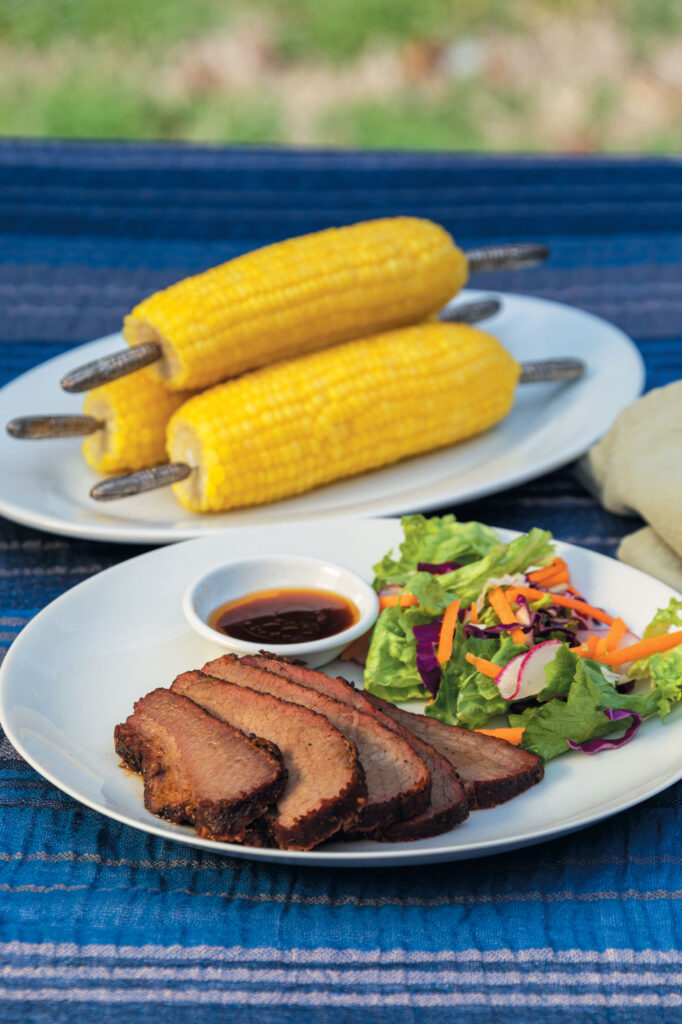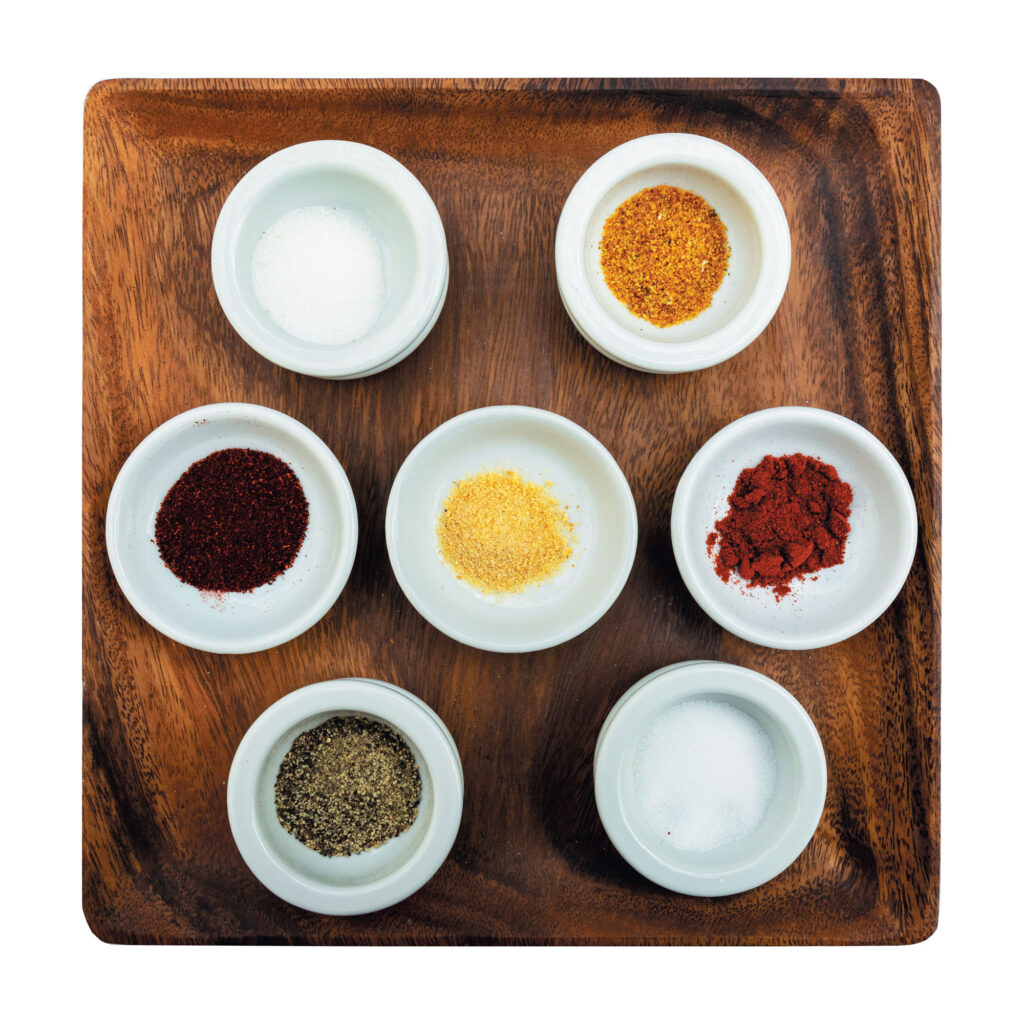Cooking perfectly tender and delicious brisket is a time-honored tradition — because, you know, the time required to do it. Brisket is both famously delectable and slow to achieve its perfection. These brisket recipes can’t magically make brisket take less time to prepare, but they WILL eliminate any anxiety over whether all that time and effort will be worth it.
- 1 (2½-pound) beef brisket
- 1 tablespoon salt
- 1½ teaspoons black pepper
- 2 cups dry red wine
- 2 tablespoons vegetable oil, divided
- 2 tablespoons all-purpose flour
- 4 garlic cloves, peeled and minced
- 1 small sweet onion, peeled and sliced
- 1 large carrot, peeled and sliced
- 1 celery stalk, sliced
- ½ cup dried apricots, cut into strips
- 1 bay leaf
- 1 tablespoon tomato paste
- 4 cups beef stock
- Minced fresh parsley for garnish
- Place the brisket on a large piece of aluminum foil and sprinkle on both sides with the salt and pepper. Cover with the foil and refrigerate for 2 hours. Meanwhile, place the wine in a saucepan over medium-high heat and bring to a boil. Reduce by half, around 12 minutes.
- Preheat the oven to 350 degrees. Place a Dutch oven over high heat and add 1 tablespoon of the vegetable oil. Sprinkle the brisket on both sides with the flour, shaking off any excess. When the oil is hot, reduce the heat to medium-high and add the brisket. Sear 3 minutes per side until well browned. Remove the brisket to a platter and add the remaining oil to the Dutch oven.
- Add the garlic, onions, carrots and celery, cooking 1 minute. Remove from the heat and add the apricots, bay leaf, tomato paste, stock and reduced wine. Stir well and place the brisket on top of the vegetables with the fat side up. Cover and cook 3 to 3½ hours or until the brisket is fork tender. Uncover and cook 20 minutes longer. Remove from the oven and skim any fat from the surface. Allow the brisket to rest for 15 minutes. Slice the brisket against the grain and serve warm with pan drippings.
- 1 (4- to 5-pound) beef brisket
- 1 (12-ounce) bottle beer
- 1 (1-ounce) package dry onion soup mix
- ¼ teaspoon black pepper
- 1 (12-ounce) bottle chili sauce
- ¼ cup cornstarch
- Preheat oven to 325 degrees. Grease heavy roaster with cooking spray and place the brisket inside. Pour the beer over the top. Sprinkle the brisket evenly with the onion soup mix and pepper. Drizzle the chili sauce over the top. Cover and bake 5-6 hours (1 hour per pound of brisket), making sure not to baste.
- Remove the brisket from the roaster onto a platter and cover tightly with aluminum foil. Strain the drippings through a sieve into a 2-cup measure. Place the 2 cups of strained drippings in a small saucepan over medium heat. Strain the remaining drippings into the measuring cup and measure ½ cup. If necessary, add water to make sure it is ½ cup of liquid.
- Place the cornstarch in a jar with a tight-fitting lid. Add the ½ cup of reserved drippings, cover and shake vigorously to emulsify. Stir into the drippings in the saucepan. Cook until thickened, stirring constantly for 5-7 minutes. Decrease heat to low and cover.
- Cut the brisket into ½-inch slices and place on the serving dish. Transfer the gravy to a serving dish or boat and serve warm.
- 1 (3- to 3½-pound) beef brisket, trimmed
- 1 teaspoon vegetable oil
- 1 sweet onion, peeled and finely chopped
- 2 large carrots, peeled and finely chopped
- 1 celery stalk, thinly sliced
- 1 leek, thinly sliced
- 2 garlic cloves, peeled and minced
- 4 cups beef stock, divided
- 1 cup dry red wine
- 2 bay leaves
- 1 teaspoon salt
- ½ teaspoon black pepper
- 1½ cups dried apricots
- 1½ cups dried pears
- ⅓ cup fresh minced parsley
- Preheat the oven to 325 degrees. Adjust the rack to fit a large roasting pan. Place the brisket in a large roasting pan that has been coated with cooking spray. Set aside.
- Place the oil in a large skillet over medium-high heat. When hot, add the onions, carrots, celery, leeks and garlic. Sauté for 4 minutes, stirring frequently. Transfer to the roasting pan around the brisket.
- Return the skillet to the stove and add 3 cups of the stock, wine, bay leaves and ½ cup water. Bring to a simmer then carefully pour around the brisket. Cover tightly with foil and place in the oven. Roast for 1½ hours.
- Remove from the oven and the brisket from the pan. Slice it across the grain and return to the pan. Add the salt, pepper, remaining stock, apricots and pears. Cover tightly with foil and roast for 1½ hours longer or until the meat is tender.
- To serve, place the meat in the center of a large platter. Using a slotted spoon, remove and discard the bay leaves. Arrange the fruit around the brisket and garnish with the parsley. Strain the pan juices into a gravy boat and serve warm with the brisket.
- 1 (3-pound) flat-cut beef brisket
- 1 teaspoon paprika
- 1 teaspoon salt
- 1 teaspoon sugar
- 1 teaspoon black pepper
- ½ teaspoon onion powder
- ½ teaspoon garlic powder
- ½ teaspoon chili powder
- Barbecue sauce of your choice
- Prepare the smoker according to manufacturer’s instructions to 225-250 degrees. Meanwhile, place the brisket in a large baking pan. In a small bowl, mix together the paprika, salt, sugar, pepper, onion powder, garlic powder and chili powder. With your hands, sprinkle the dry rub evenly on the brisket, rubbing it in. Allow to sit at room temperature while the smoker preheats.
- Place the brisket in the smoker and maintain the temperature for 5 hours or until a thermometer inserted in the thickest part of the meat registers 195-205 degrees. Remove from the smoker and allow to rest for 10 minutes. Slice thin across the grain and serve warm with your preferred barbecue sauce.
- Alternative gas grill method
- Soak hickory pieces in water for 35 minutes, then drain. Wrap the pieces in heavy-duty aluminum foil (or a double thickness of regular foil) and poke several holes in the foil with an ice pick.
- Light one side of the gas grill and place the foil-wrapped pieces on the hot coals. Allow to preheat for 10 minutes. Meanwhile, after rubbing with the dry spices, place the brisket in a large disposable aluminum roasting pan. Add 1 cup water and cover tightly with foil.
- Place on the unlit side of the grill and close the lid. Grill for 2 hours or until the brisket is tender, turning halfway through.
- Remove from the pan and place on the grill rack over the hot coals. Grill 6 to 7 minutes on each side, then remove and wrap in aluminum foil. Allow to rest for 10 minutes before slicing across the grain.
Tips and Tricks
Brisket bits:
Always trim away any excess fat from the brisket before you begin. This will be easier to do if you place the unopened package in the freezer for about 20 minutes.
When trimming, you don’t want to remove all the fat because that serves as a self-baster to help keep the meat moist. But removing the extra will make the cut nice and smooth, allowing smoke and heat to evenly permeate the brisket.
Keep the temperature steady for cooking. This means you might need to avoid windy days if you are cooking the brisket outside on the grill. Or you can select the oven version and prepare it there instead.
Undercooked brisket will be tough. That’s because the collagen (connective tissue) in the meat seizes up before it reaches the point where it begins to melt. Always use a meat thermometer to check for doneness. It should slip in and out as if you were probing room temperature butter.
Resting the meat is a key to keeping it moist, so set a timer, and don’t fudge on the time. It needs at least 10 minutes!
A good electric knife is great for slicing, but a sharp chef’s knife will work equally well.
Ask Chef Tammy
Rebecca asks, “Why is there no leavening in the recipe my Mother used to make puff pastry? Is something missing? Please help!”
Rebecca, none is needed! Instead of traditional leavening ingredients such as baking powder, baking soda and yeast, puff pastry counts on something else. It’s the folding and many brushings with the butter/flour/water mixture that becomes “leavening” for this delicacy. That tedious work creates steam between the many dough layers to expand it during baking and give it flavor.
Annette writes, “I received a gift basket that included a jar of Dusseldorf mustard. I haven’t opened it yet but am wondering if I can use it like regular mustard.”
Annette, once you open and taste this mustard, you’ll notice that it is delightfully mild. It is probably the most popular German mustard type. I would use it with spicy foods so it doesn’t compete with anything and still is noticeable for taming the flavor.




